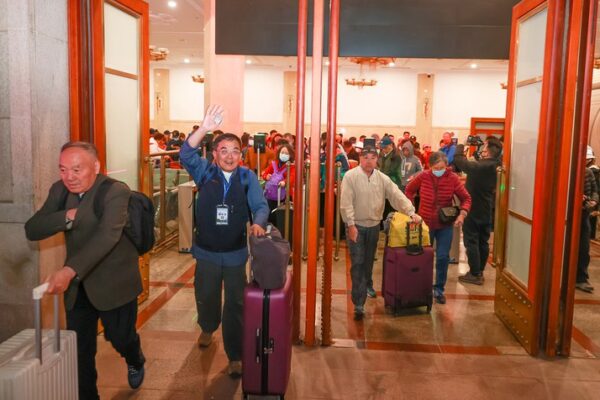
Government overconfidence could cloud a brighter future for Laos
It may sound perverse to say – given that inflation in Laos has been at one of the highest rates in Asia since 2022, the national debt stands at more than 130 percent of GDP – but the second-poorest nation in Southeast Asia has many reasons for optimism. Tourism is likely to return to pre-pandemic levels this year. Its ASEAN chairmanship this year is greatly boosting its international profile—and, thus, international trade prospects. Vientiane has sensibly bet on food exports to China, since China’s demographics are arguably the worst in the world and is set to have the fastest population decline in human history. Even today, China cannot feed itself. It imports around 65.8 percent of all foodstuff. Although that was down from 93.6 percent in 2000, external demand is likely to rise in the coming years as its working-age population collapses, forcing even more rural folk into the cities and industries. It is therefore a solid bet by Vientiane that agriculture exports to China will grow in the coming decades. Its exports increased to $1.4 billion in 2023, up by a quarter from the previous year. The Vientiane-Kunming railway has already expanded export opportunities into China. If Laos can attract interest from consumers further west, in Central Asia and Europe, it can use the railway links through China to increase trade. Better still, if Laos can extend its rail network down to Thailand’s ports, again thanks to Chinese investment, that would make it easier and cheaper to export its goods further afield. Travelers walk toward the first Beijing-Laos cross-border tourist train at the Beijing Railway Station on March 18, 2024. (Jia Tianyong/China News Service/VCG via Getty Images) Better than that, Vietnam has pledged to connect Laos via railways to its port in Vung Ang, which would make it easier for trans-Pacific exports, opening up Laos’ producers to the U.S. market. Politically, too, the communist Lao People’s Revolutionary Party can be confident in its own monopoly on power. There is no meaningful resistance group among the diaspora or at home. Unlike communist Vietnam, there is nothing like a pro-democracy movement. Perhaps most heartening for Vientiane, and something often overlooked, Laos has the youngest population of all the ASEAN states and the healthiest-looking demographics over the coming three decades. Just 4.7 percent of the population is aged above 65. Some 65.4 percent are of working age (15-64) and 29.9 percent are below the age of 15. By 2050, the working age population will actually grow to 68 percent, while just a tenth will be of retirement age by that year. Aged versus aging societies By comparison, in 2050, a fifth of Vietnam’s population will be aged 65 and over. In Thailand it will be around a third. Laos won’t become an “aging society” – when 7 percent of the population is aged above 65 – until 2035. It won’t become an “aged society” – when the over-65 cohort is above 14 percent) – until 2059. One reason for this, however, is the country’s shorter life expectancy. Vietnam became an “aging” society in 2011; Thailand became “aged” in 2020. Moreover, when Thailand became an “aging” society in 2002 its GDP per capita was $2,091. Vietnam reached it in 2011 when its GDP per capita was $1,953. Laos’ GDP per capita stands at $2,535, and it still has another decade or so before it touches “aging” society status. This means that Laos has at least 30 years before demographics start to bite, and even by 2050 there will still be double the number of youngsters aged 0-15 than retirees. That gives Laos three decades to expand industry and output. For these reasons, political leaders in Vientiane often give off the air of extreme patience, as though they’re sitting pretty on borrowed time. On the trade front, Laos achieved above 7 percent growth rates in the 2010s when its trade was almost entirely with its immediate neighbors. New infrastructure could open up vastly more markets and attract far more investment in industry and manufacturing, which remains nascent. Young people splash water at each other in celebration of the Songkran festival in Vientiane, April 14, 2023. (Kaikeo Saiyasane/Xinhua via Getty Images) Railway connections to ports in neighboring countries can help Laos overcome its landlocked confinement at the same time as its workforce booms in number – with around 2 million Laotians to be added to the workforce by 2050. However, not all is well. The economy has been shockingly bad since 2020, not all of which was caused by the COVID-19 pandemic. The government and central bank have been incompetent in constraining inflation—and just about all other economic ailments. The national debt started to climb to unmanageable levels by 2018. Laos imports too much and has barely any control over exports. The government admits that close to a third of export revenue doesn’t reenter the country. Mostly it is funneled to foreign-owned companies, or profits are hidden, denying Laos a massive chunk of available taxes. Education, tax collection concerns It’s unlikely that Laos can fully weaken itself off imports. Dispensing of its petroleum dependency would be sensible, given that Laos produces more than enough energy through its hydropower dams. But that means converting most transport and machinery to electric battery-powered, which is simply too expensive for most countries, not least Laos. It still also relies massively on imports for agricultural inputs such as fertilizers. Since 2020, ever greater numbers of Laotians have left to find work abroad, mainly in Thailand. This has depopulated many rural communities, leaving the elderly to tend to the young. Many of those who have left are the better-educated. At the same time, the education sector is now in poorer health than pre-2020, although government spending on education began to fall as a percentage of GDP much earlier. Non-attendance or absentee rates are high among students, and teacher numbers are dwindling. It’s difficult to see how this generation of children, buffeted by the pandemic and shoddy schooling, will become as…






